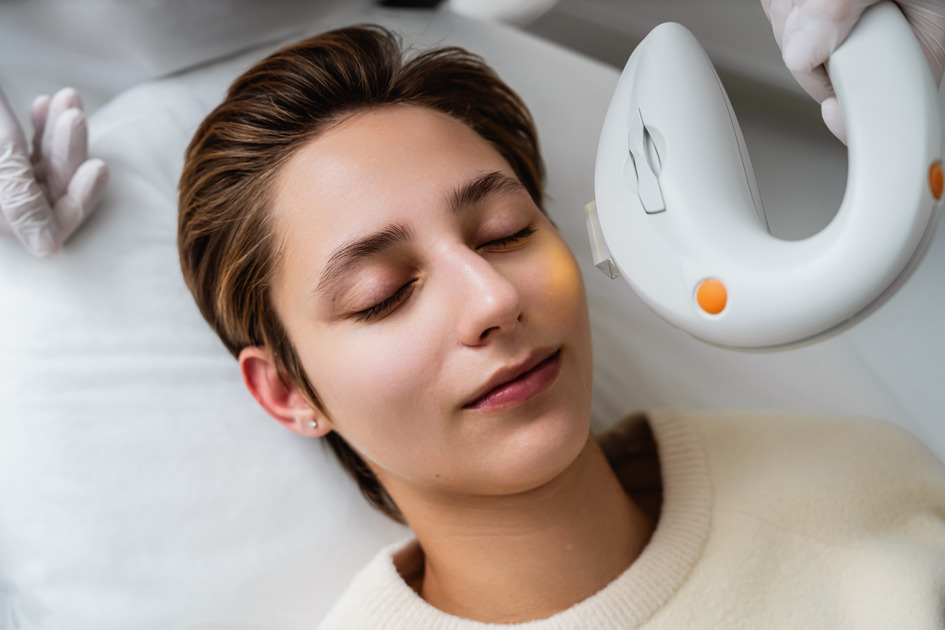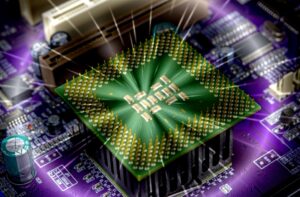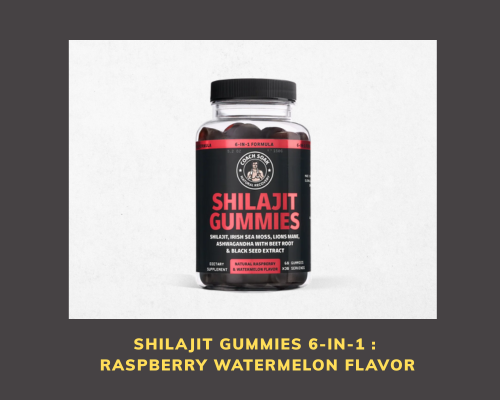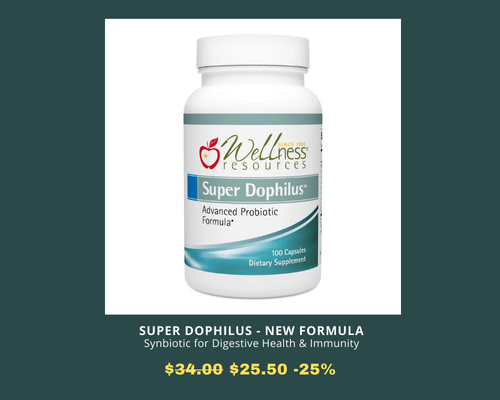The quest for longevity and youthful skin has never been more vibrant than in 2025. This year brings a convergence of cutting-edge anti-aging technologies – from revolutionary skincare and skin-tightening procedures to game-changing supplements and gene therapies that target aging from within. In this editorial, we explore the newest breakthroughs in anti-aging, the so-called “holy grail” solutions scientists are chasing, the latest skin tightening treatments of 2025, and even celebrity insights (like Jennifer Aniston’s much-buzzed routine). Backed by clinical trials and expert reviews, here’s your comprehensive guide to staying youthful inside and out.
Breakthroughs in Longevity Science (Internal Anti-Aging)
Staying youthful isn’t just about creams and lasers – 2025’s biggest anti-aging breakthroughs are happening at the cellular and genetic level. Scientists are homing in on interventions that slow down or even reverse aspects of aging:
- Gene Therapies Boosting Youthful Proteins: In a remarkable study, researchers used gene therapy to boost levels of a protein called Klotho in mice. The result? Treated mice lived 15–20% longer and showed improved muscle strength, bone density, and cognition, scitechdaily.com. This Klotho therapy, delivered via viral vectors, essentially made 24-month-old mice (equivalent to ~70-year-old humans) stronger and sharper as they aged. While human applications are still in the future, it opens the door to therapies that add extra healthy years to life.
- Senolytics – Wiping Out “Zombie Cells”: Our bodies accumulate senescent cells (sometimes dubbed “zombie cells”) that secrete inflammatory factors and accelerate aging. Senolytic drugs aim to selectively destroy these cells. Early trials in animals show promise – for example, compounds like dasatinib+quercetin have extended mouse lifespans in studies. In humans, Mayo Clinic trials using senolytics (for conditions like lung fibrosis) hint at reduced frailty, though research is ongoing. The goal is to extend healthspan (years of healthy life) by cleaning out damage that naturally accumulates with age.
- Rapamycin & Metformin – Anti-Aging Pills?: Decades-old drugs are being repurposed as possible longevity enhancers. Rapamycin, an mTOR inhibitor, has emerged as a star in a 20-year NIH program testing anti-aging compounds – it extended animal lifespans by up to 28%, even when started in middle age news.uthscsa.edu. This drug essentially signals cells to shift from “growth” mode to “repair” mode, curbing aging-related damage. Meanwhile, the diabetes drug metformin is being tested in the landmark TAME trial to see if it can delay age-related diseases in humans. Metformin has already shown lifespan extension in worms and mice, and epidemiological hints of benefits in diabetics. These drugs carry risks (e.g., immune effects for rapamycin), so experts urge caution, but they represent a burgeoning field of geroprotective drugs.
- NAD+ Boosters: NAD+ is a molecule every cell needs for metabolism and DNA repair, but levels drop with age. Supplements like NR (nicotinamide riboside) and NMN that raise NAD+ have exploded in popularity. In animal models, boosting NAD+ improves health and lifespan. Notably, in late 2024, the FDA moved to regulate NMN as a drug, but other NAD precursors remain on the market. Many longevity enthusiasts take products containing NR or niacinamide to support cellular energy. While human data is still emerging, raising NAD+ is seen as a promising way to recharge aging cells dvcstem.com.
- Targeting Inflammation and Aging at the Source: Perhaps one of the holy grails of anti-aging arrived via an unexpected route – an arthritis-related protein. Researchers at Imperial College London discovered that blocking interleukin-11 (IL-11), a protein that increases with age, dramatically extended healthy lifespan in mice. Knocking out the IL-11 gene boosted mouse lifespan by over 20%. Even more impressively, giving elderly mice an antibody to neutralize IL-11 from 75 weeks of age led to a 22–25% increase in median lifespan (males and females). The treated mice lived ~155 weeks vs 120 weeks for untreated – equivalent to roughly 95-year-olds vs 75-year-olds in human terms. They also stayed remarkably spry: fewer cancers, better muscle function, improved vision and hearing, and even glossier fur with no gray hair gdnonline.comimperial.ac.uk. This breakthrough suggests that chronic inflammation (IL-11 rises after about age 55 in humans) might be a key driver of aging, and shutting it off could be transformative. Human trials are needed, but IL-11 blockers (already in trials for fibrotic diseases) might one day be repurposed to help people live longer, disease-free lives.
- Stem Cells and Regeneration: Another major avenue is using our body’s own regenerative capacity. Mesenchymal stem cell (MSC) infusions are being explored to rejuvenate tissues. Early studies suggest MSC therapy can improve immune function and reduce inflammation in older adults. Clinics like DVC Stem (Grand Cayman) and others offer experimental stem cell infusions aimed at anti-aging, though this is still somewhat controversial and not FDA-approved. The idea is that stem cells can migrate to damaged tissues and release growth factors that aid repair, potentially reversing some aging damage. While hard evidence in humans is limited, many see stem cell therapy as a pillar of future longevity medicine, dvcstem.com.
- Lifestyle & Supplements: Amidst high-tech solutions, don’t forget the basics. Longevity experts stress that a healthy lifestyle remains foundational. Regular exercise, a nutrient-rich diet, quality sleep, and stress management all slow the aging process naturally. For instance, studies on caloric restriction (and its milder form, intermittent fasting) show it can improve biomarkers of aging and even lengthen lifespan in lab animals. So-called caloric restriction mimetics like resveratrol (found in red wine) are being studied to mimic these benefits without strict dieting. And every day supplements from vitamin D to omega-3 fish oil can support healthy aging (e.g., vitamin D for bone health and immune function). The bottom line: while cutting-edge therapies are emerging, a lot of the “longevity magic” is still in maintaining a balanced lifestyle – what one longevity researcher calls “adding life to years” as well as years to life.
Cutting-Edge Anti-Aging Skincare & Technology (External)
On the cosmetic front, 2025 is witnessing unprecedented innovation in skin rejuvenation. The focus is on treatments that deliver surgical-level results with minimal invasiveness. Here are the star technologies tightening skin and erasing years:
- Next-Gen Skin Tightening Devices: Forget the old facelift-only approach – today’s devices use energy (laser, ultrasound, radiofrequency) to firm skin by boosting collagen. Radiofrequency (RF) microneedling devices like Morpheus8 continue to be hugely popular; they pierce the skin with tiny needles and send RF energy into deep layers, triggering collagen remodeling. In fact, Morpheus8 was among Jennifer Aniston’s go-to “tweakments” – she described it as “uncomfortable” but effective for tightening and new collagen. New RF innovations in 2025 include QuantumRF 10, a fractional RF that precisely heats deeper tissue to contract and contour, great for jawlines and double chins, brunnermd.com. Another is IgniteRF, which cleverly combines FaceTite (a minimally invasive RF lipolysis) with Morpheus8, treating both fat and skin laxity together. By blending technologies and monitoring skin temperature in real time, these systems give tighter, lifted faces with far less downtime than surgery.
- Micro-Coring (Ellacor): A true breakthrough in 2025 is Ellacor, a device that literally removes micro-cores of skin to tighten tissue – without a scalpel or visible scars. Ellacor’s hollow needles punch out tiny columns (less than 0.5mm) of skin in the mid to lower face, stimulating the surrounding skin to contract and heal tighter. In total, it can remove ~5% of the skin’s surface in a session, enough to significantly reduce wrinkles and jowling. Clinical studies showed noticeable improvement in lower-face laxity after a series of treatments, making Ellacor a lunchtime alternative to a mini-facelift. The bonus: no heat, so it’s safe for a variety of skin types and carries less risk of pigment changes.
- Advanced Lasers & Energy Facelifts: Laser skin resurfacing has been around, but new iterations are gentler and smarter. Fractional lasers like Fraxel have been joined by newcomers such as UltraClear, touted as the first “cold” ablative fiber laser that resurfaces skin with minimal redness. Combination lasers like HALO (which pairs ablative and non-ablative wavelengths in one treatment) continue to be popular for improving texture and pigment in one go. Meanwhile, ultrasound-based tightening (e.g., Ultherapy’s focused ultrasound and the newer Sofwave) is gaining a reputation as the “no-scalpel facelift.” These reach the SMAS layer under the skin to stimulate lifting – one dermatologist notes that doing Sofwave annually can yield a subtle “Benjamin Button” effect over time. Patients love that ultrasound and laser treatments can be done in a couple of hours with just redness or mild swelling as after-effects.
- BroadBand Light (BBL) & Photofacials: For maintaining a youthful glow, light-based treatments are key. BroadBand Light (BBL), a refined form of intense pulsed light, is a staple in many 50+ celebrities’ routines. In fact, a beauty writer noted that many in her “midlife gang” routinely get BBL photofacials – a “painless new laser” that erases fine lines, sunspots, and pigmentation on the face, chest, and hands. BBL not only clears discoloration but also stimulates collagen; a Stanford study even suggested BBL can change gene expression to resemble younger skin. It’s no downtime and great for color correction – no wonder Jennifer Aniston says she’s “not going to say I don’t get the lasers and all that good stuff” to maintain her famous glow.
- At-Home Anti-Aging Tech: The high-tech skincare trend isn’t limited to clinics. 2025’s consumers are investing in at-home LED light masks, microcurrent devices, and more. Red and near-infrared LED masks (popularized by estheticians like Shani Darden) are now considered a must-have by many younger people looking to prevent aging. Dr. Korman, a plastic surgeon, notes his own 20-something daughter uses a red light therapy mask nightly to ward off wrinkles. These devices emit wavelengths shown to boost collagen and reduce inflammation. Likewise, handheld microcurrent wands (which send gentle electrical currents to facial muscles) are hailed for toning and lifting – Jennifer Aniston herself is said to use the ZIIP microcurrent device from her esthetician ziipbeauty.com. While at-home gadgets offer milder results than in-office treatments, consistency can yield visible improvements over time, and they cater to a “preventative skincare” mindset in the social media generation.
- “Notox” Trend – Youthful Skin Without Fillers: In parallel with the injectables boom, there’s a growing “notox” movement – people who want youthful skin but are wary of frozen foreheads or overfilled cheeks, businessinsider.com. For them, the new skin tightening procedures are ideal because they stimulate the body’s natural collagen instead of adding foreign substances. Unlike Botox or filler (which mainly mask aging signs), energy devices actually renew the skin from within, giving a fresher but natural look. The younger generations are jumping on this, doing mild laser or ultrasound treatments in their 30s to delay the appearance of aging. Doctors often recommend a combination (“stacking”) approach – e.g,. A patient might do a BBL for tone, an RF microneedling for tightening, and a little filler for volume. By addressing multiple layers (surface, mid-dermis, deep tissue), these tailored plans can achieve a result that rivals a surgical facelift without a single incision.
The “Holy Grail” of Anti-Aging – Reversing Aging Itself
What do experts mean by the “holy grail” of anti-aging? Essentially, it’s interventions that truly reverse biological aging, not just treat the symptoms. Several groundbreaking areas in 2025 inch us closer to that dream:
- Epigenetic Reprogramming: Perhaps the most profound idea is partial cellular reprogramming – turning back a cell’s “age clock” to a younger state by genetic tricks. Scientists have found that inducing Yamanaka factors (the genes that can revert adult cells to stem cells) in a controlled way can rejuvenate tissues. In mice, transient reprogramming has been shown to restore vision in old animals and improve tissue function. Startups like Altos Labs (funded with ~$3B, including Jeff Bezos’s backing) and Turn Bio are racing to harness this for humans. The vision is a future where we could take a 60-year-old’s cells and reset them to how they behaved at 30, effectively erasing damage. It’s still early-stage science – too much reprogramming can cause tumors or wipe cell identity – but if perfected, it’s aging reversal at the cellular level. Many call this the ultimate holy grail of longevity, as it targets aging’s root causes in our epigenome (the markers on DNA that control gene expression).
- Telomere Extension: Every time our cells divide, the protective end-caps of chromosomes (telomeres) shorten – think of it like a countdown clock of aging. Lengthening telomeres has long been a target for age reversal, often deemed “the Holy Grail of the biology of aging,” according to Prof. Shai Efrati. Remarkably, a first-of-its-kind trial in 2020 showed it’s possible: Efrati’s team used hyperbaric oxygen therapy (HBOT) on healthy seniors and found that after 60 sessions, participants’ telomeres grew on average 20%–38% longer, and senescent “zombie” cells in their blood dropped by up to 37% scitechdaily.com. In plain terms, their blood cells became younger. This was hailed as evidence that the aging process can be reversed at the cellular level. In 2025, more clinics are adopting Efrati’s HBOT protocol; for example, the Aviv Clinics in Florida and Dubai now offer multi-month oxygen therapy programs promising improved cognitive function and cellular rejuvenation. Telomere biology is complex (and HBOT isn’t a magic youth serum for everyone), but this research fuels hope that age reversal isn’t sci-fi – it’s happening in labs right now.
- Blood Factors and “Young Blood” Therapies: Another futuristic approach gaining traction is the idea of blood factor transfusions – essentially giving older individuals the circulatory factors of the young. It sounds vampiric, but it’s rooted in science: parabiosis studies (joining the circulatory systems of a young and old mouse) showed tissues in the old mouse regenerate better. Now, companies are isolating what youth factors might be at play (e.g., certain proteins like GDF11, or exosomes in plasma). Early-stage trials are testing whether giving young plasma or specific plasma proteins to older adults can improve biomarkers of aging. The flip side is removing bad factors – a trial at UC Berkeley found that simply diluting the blood plasma of old mice (replacing some with saline and albumin) led to rejuvenation of muscle and liver, hinting that “aging factors” were reduced. While the fountain of youth isn’t bottled yet, 2025 has several ventures (such as Altitude Lab’s projects and Conboy Lab spinoffs) attempting to translate this to therapies. In the near future, we might see “age-resetting” blood plasma infusions as an available longevity treatment at specialized clinics.
- AI-Discovered Geroprotectors: In a very modern twist, artificial intelligence is now an ally in anti-aging research. AI algorithms can sift through massive datasets of molecular structures and genomic data to identify compounds that might extend lifespan. In fact, researchers at Scripps Research and biotech company Gero used AI to pinpoint new drug candidates that combat cellular aging. By crunching data on how gene expression changes with age, their AI predicted certain molecules could mimic caloric restriction benefits or enhance cells’ stress resistance. Some of these AI-discovered compounds are entering testing pipelines now. The exciting implication is that AI may accelerate the discovery of an anti-aging drug (or cocktail of drugs) that can be taken like daily vitamins to keep us younger longer.
Together, these “holy grail” pursuits aim not just to mask aging, but fundamentally reset the clock. It might take years for human-ready solutions, but each breakthrough – whether it’s lengthening telomeres, removing aged cells, or reprogramming cells – adds a piece to the puzzle of potentially undoing aging.
Celebrity Trends: Jennifer Aniston’s Routine and the Pop Culture Buzz
Anti-aging has also gone mainstream in pop culture, with celebrities openly sharing their experiments with new treatments. A prime example is Jennifer Aniston, long admired for her age-defying appearance at 54. In the past year, Aniston made headlines by revealing some surprising elements of her routine:
- Peptide Injections: Jennifer mentioned she’s been doing weekly peptide injections touted to “battle the effects of aging”glowday.com. While she didn’t specify which peptides, anti-aging clinics offer everything from growth hormone secretagogues to thymus peptides that claim to boost cellular repair. The jury is out on many of these, but some, like peptide Epitalon (studied for telomere effects) or thymosin alpha, have small studies suggesting immune or longevity benefits. The fact that a Hollywood A-lister is on board shows how far the longevity craze has penetrated – it’s chic now to get anti-aging IV drips or injections, not just spa facials.
- Salmon Sperm Facial (Polynucleotides): Perhaps the most jaw-dropping headline was Jennifer Aniston trying a “salmon sperm facial.” This actually refers to an injectable treatment with polynucleotides, a hot new skin booster derived from fish DNA. In a facial procedure, microscopic needles deliver polynucleotide gel into the skin (sometimes mixed with hyaluronic acid). The science: these DNA fragments create an ideal environment for skin regeneration – increasing hydration, plumping, and even aiding tissue repair, glowday.com. The polynucleotides are indeed originally sourced from salmon milt (sperm) – the DNA is extracted and purified, so no, you’re not rubbing sushi on your face! Aniston joked on TV about not knowing how they get the sperm from the salmon, but she was game to try it. She reported tongue-in-cheek that she hadn’t seen dramatic results but thought it “could be the future” of skin care,e people.com. Dermatologists note there’s genuine potential here: Dr. Joshua Zeichner explains these injections can improve skin hydration, texture, and even fine lines, essentially by providing the raw materials (nucleotides and amino acids) for skin cells to rebuild. The treatment is not FDA-approved in the U.S. yet, but it’s trending big in Europe and Asia. In fact, Croma Pharma’s polynucleotide filler (marketed as PolyPhil or PDRN) is being called “the new Profhilo” by aestheticians – a next-gen skin reviver that could become as routine as Botox in the coming years.
- Laser and “Good Stuff”: Jennifer Aniston also says she’s no stranger to lasers and high-tech facials. “I’m not going to just let the gray hairs take over,” she quipped, noting that she does “all the good stuff” like facials and laser treatments to maintain her looks. Her go-to regimen likely includes BBL photofacials for pigment (as evidenced by friends in her circle doing it, the-independent.com), Morpheus8 RF microneedling (which she’s reportedly done on areas starting to lose firmness), and excellent topical skincare. She’s a big proponent of retinol – in fact, her long-time facialist is known to put nearly all clients on prescription tretinoin cream, the gold-standard wrinkle fighter that boosts collagen (often hailed as “the only topical that truly works” by experts). Jennifer also focuses on wellness from within: she’s an ambassador for a collagen peptide supplement brand (stirring collagen powder into her morning shake), she prioritizes sleep, hydration, and famously practices yoga. It’s this holistic approach – high-tech skincare plus healthy living – that many celebs credit for their ageless beauty.
- Other Celebrity Fads: Jennifer isn’t alone in pushing the envelope. Her friend Courteney Cox has tried the Morpheus8 as well. Kim Kardashian revealed on The Kardashians show that she got the same salmon-sperm polynucleotide injections after hearing about Jen’s experience on people.com. Stars like Madonna and Eva Longoria have been fans of platelet-rich plasma (PRP) facials (a.k.a. “vampire facials”) and stem-cell infused skincare. And of course, many celebs are using off-label health tricks: there’s buzz that some are on low-dose rapamycin or metformin (under doctor supervision) as anti-aging drugs, and there’s a trend of IV lounges in LA where you can get a glutathione drip for glowing skin. While some of this veers into experimental territory, it shows that anti-aging has become a pop culture obsession. The benefit for us: many of these once-fringe treatments are becoming more accessible and studied, meaning the average person can access advanced rejuvenation tools that were once celebrity secrets.
Products and Clinics Leading the Way
With all these innovations, you might wonder: How can I try them, and what should I use? Here are some notable products and clinics in the longevity and aesthetic space (always do your research and consult professionals before trying any advanced treatment):
- Skincare “Holy Grails”: Dermatologists still recommend retinoids as the top topical anti-aging product – prescription tretinoin or over-the-counter retinol are proven to reduce wrinkles and boost collagen. For moisturizer, one cult favorite is Augustinus Bader’s cream, famed for its stem-cell technology. Users (including celebs) swear it gives “bouncy, glass skin,” though the luxury comes at a price (their high-end kit runs over $1,300). Vitamin C serums and broad-spectrum sunscreen are also daily must-haves to protect and maintain skin youthfulness. As an antioxidant, vitamin C can spur collagen production and fade sun spots, enhancing any in-office treatments, businessinsider.com.
- Clinics and Treatments: If you’re considering professional procedures, look for board-certified dermatologists or plastic surgeons who offer the latest devices. Ellacor micro-coring is available at select advanced clinics (often those participating in its clinical trials). RF microneedling (e.g., Morpheus8) and ultrasound lifting (Ultherapy/Sofwave) are widely available at medispas and derm offices – just ensure the provider is experienced. For a one-stop “facelift alternative,” some plastic surgery centers offer combination packages like EmbraceRF (FaceTite + Morpheus8), which can run a few thousand dollars but deliver a significant lift without surgery. Additionally, medical wellness clinics are popping up for internal anti-aging: places like the Buck Institute’s Rejuvenation Clinic (research-based) or biohacker clinics in California offer comprehensive longevity assessments, NAD+ IV infusions, and hormone optimization. If you’re adventurous and have resources, offshore clinics such as DVC Stem in Cayman or Panama’s Stem Cell Institute offer stem cell therapies for anti-aging (albeit at a hefty cost and still experimental status).
- Longevity Supplements: On the supplement shelf, 2025’s top hits include collagen peptides (for skin and joints), NMN/NR for NAD+, resveratrol and quercetin for their antioxidant and senolytic properties, and spermidine (a wheat germ extract some studies link to lifespan extension via autophagy). One might find these bundled in “longevity stacks” sold by wellness brands. For example, Elysium’s Basis (NR + pterostilbene) or Novos Core are products specifically marketed to support cellular health and slow aging. Just remember, supplements can support wellness but aren’t magic – it’s wise to check for clinical evidence and quality sourcing (and again, a doctor’s advice) before spending a fortune on the latest “age-reversing” pill.
- Emerging Treatments to Watch: Keep an eye on treatments currently in trials – these could hit clinics in the coming years if results pan out. Anti-IL-11 drugs (the ones that extended mice’s lives by 25%) are already in human trials for fibrotic diseases; a success there might accelerate their testing in general aging or frailty. Polynucleotide injections are likely to become more common in high-end spas once approved – some clinics in New York and LA quietly started offering them under special access, branding it as the “DNA facial.” Also, exosome therapies (using lab-grown vesicles that act like cell messengers) are an exciting frontier: dermatologists are already adding exosome serums post-laser to speed healing, and systemically, they’re being studied for regenerating tissues without full cell transplants. In short, the gap between sci-fi and reality is closing.
Conclusion: A New Era of Longevity and Youthful Vitality
In 2025, the worlds of high-tech biotech and everyday beauty are blending into a single goal – extending our healthspan while looking as vibrant as possible. We now have gene therapies that make old mice young, lasers that can tighten skin in a lunch break, and yes, even “salmon sperm” facials that might give you a celebrity glow. It’s a thrilling time where the “holy grail” of anti-aging no longer seems unattainable; each breakthrough, from Klotho genes to IL-11 blockers, is a step toward aging as a treatable condition rather than an inevitability.
That said, the smartest approach to longevity is balanced: combine proven lifestyle habits (sunscreen, exercise, good nutrition) with a dash of the new innovations that suit your needs and budget. A longevity regimen might soon be as common as a skincare routine – some supplements for your cells, a yearly device-based treatment for your skin, and regular checkups that track your biological age. With science and self-care together, living longer and looking younger is more achievable than ever.












